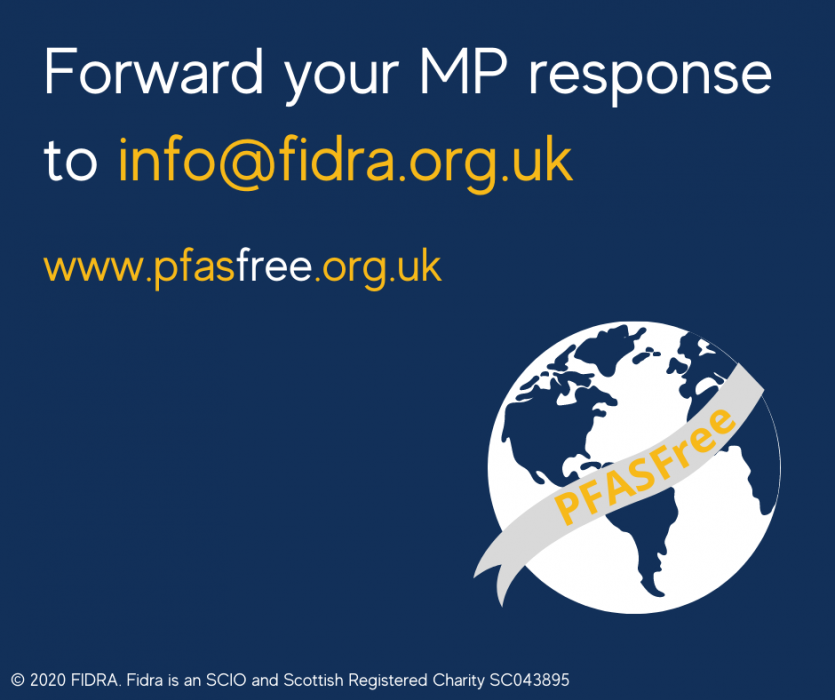Following a wave of concern from local constituents, MPs have been asking government ministers tough questions about the future use of harmful forever chemicals, PFAS, within the UK.
In November last year, we asked Fidra’s supporters to share their concerns about environmental pollutants, PFAS, with their local MPs. In the weeks that followed, more than 900 emails were sent to over 70% of MPs across the UK.
And it didn’t end there. Over the past few months, we’ve been collating responses, and providing information to concerned MPs looking to take matters further. On the request of their constituents, MPs have been sending letters and emails to government ministers for the Department for Environment, Food and Rural Affairs, the Department of Health and Social Care and to the Cabinet Secretary for Environment, Climate Change and Land Reform, all raising concerns about the future use of PFAS in the UK. We’ve also seen 8 new questions on PFAS raised in parliament by MPs since November last year. Ministers are being questioned about the effectiveness of existing PFAS restrictions, asked if they’re considering banning PFAS in food packaging (something Fidra strongly supports), and if they intend to keep pace with the EU and ensure we move towards restrictions on all non-essential uses of these harmful pollutants. This is a great result, and an important step in ensuring policy that protects us from PFAS.
The UK government has now announced an intention to perform a Regulatory Management Options Analysis (RMOA) on PFAS. Working with the Environment Agency, they will assess whether there is sufficient need to take action in the UK, and identify appropriate measures to address the issue. There are many hurdles yet to overcome, and there will undoubtedly be those who will dismiss the risks and object to stricter regulations, but this announcement puts PFAS as a key government priority. That’s a giant leap closer to our vision of a future free from PFAS pollution.
The government is also currently developing its chemical strategy, which will set out the framework of how the UK manages and regulates chemicals going forward. The EU Chemicals Strategy for Sustainability, released last year, committed to ban all non-essential use of PFAS, and with promises that the UK will improve upon environmental standards after Brexit, this is something Fidra strongly believe the UK should follow.
 What’s Next?
What’s Next?
The next few months are a critical time for the development of the UK chemicals strategy and for engagement with the RMOA process, so we’ll be following up on MP responses and encouraging policy discussion on the future of PFAS.
If you contacted your MP and received a response, please remember to share it with us. It’s really important for us to know who’s engaged and who’s willing to take action on this issue. You can forward your response to: info@fidra.org.uk
We also need as many people as possible to keep this conversation going, so please, share this blog with your friends and family, and if you haven’t already, follow us on Facebook and Twitter for all the latest updates.

